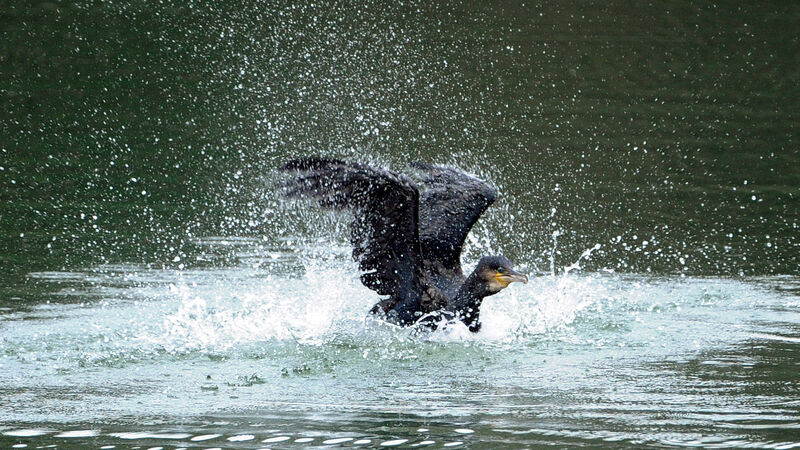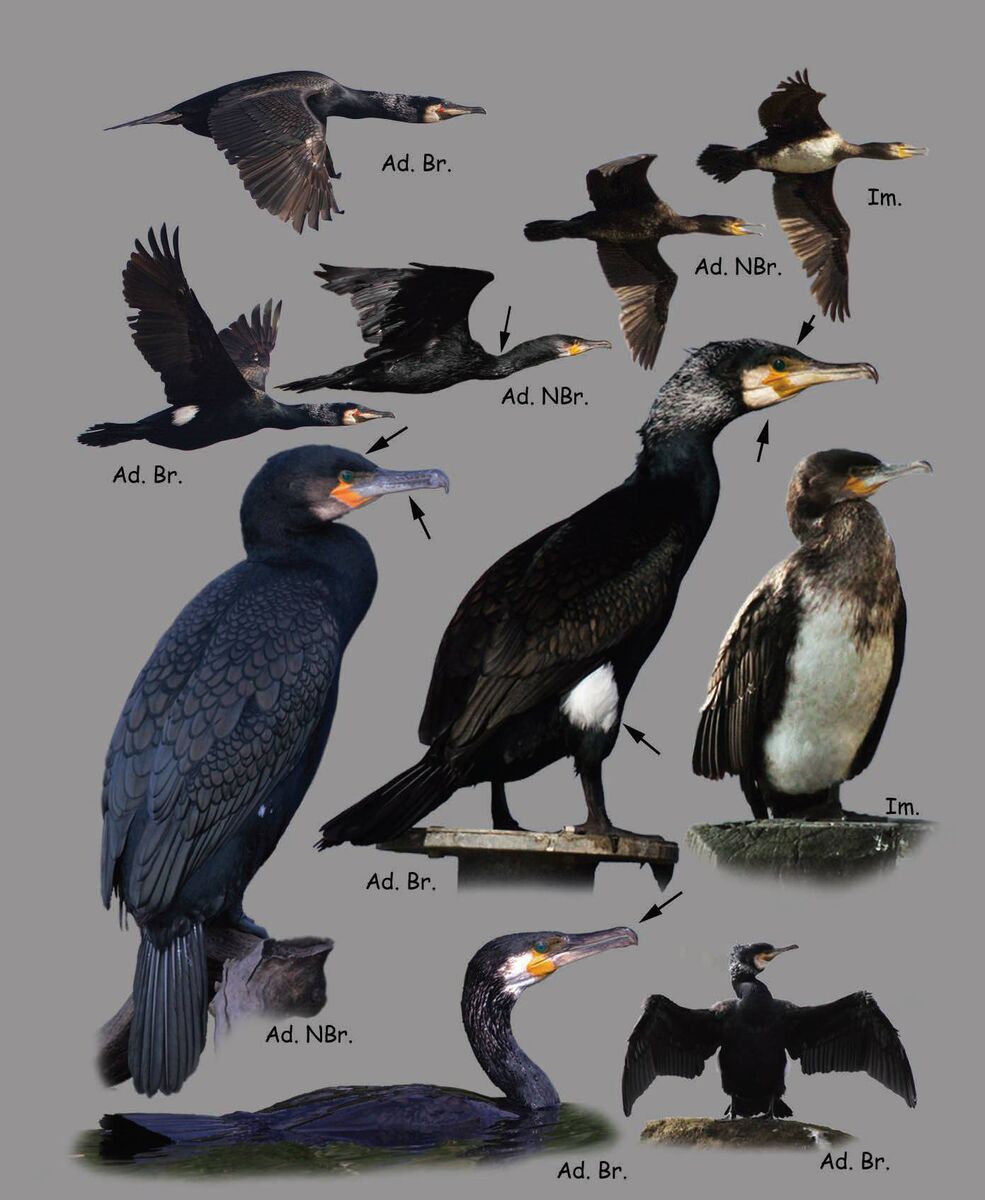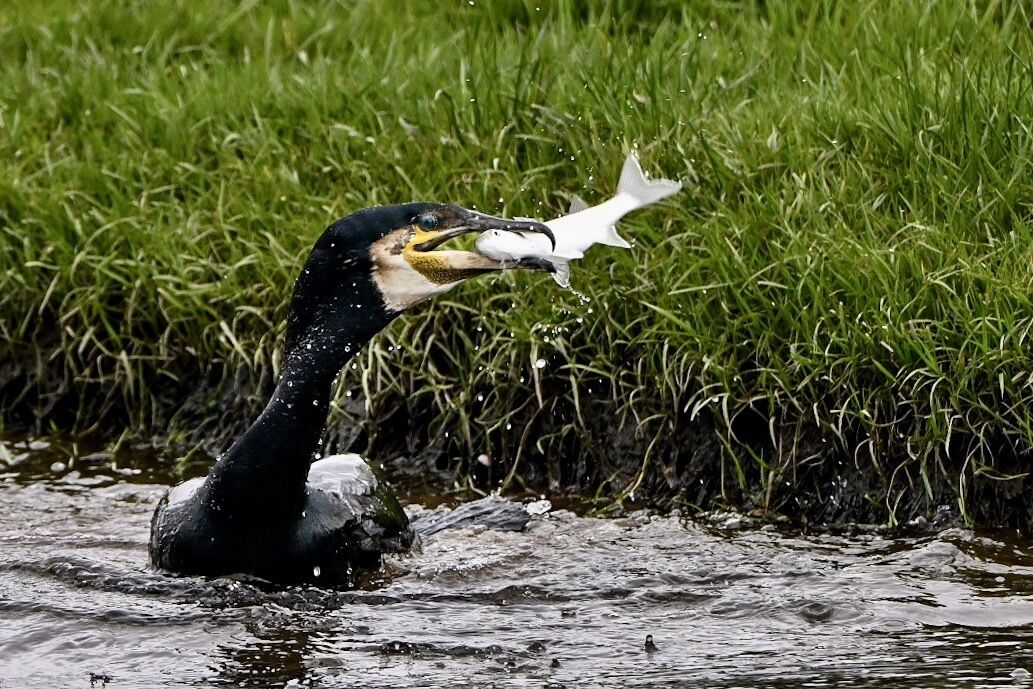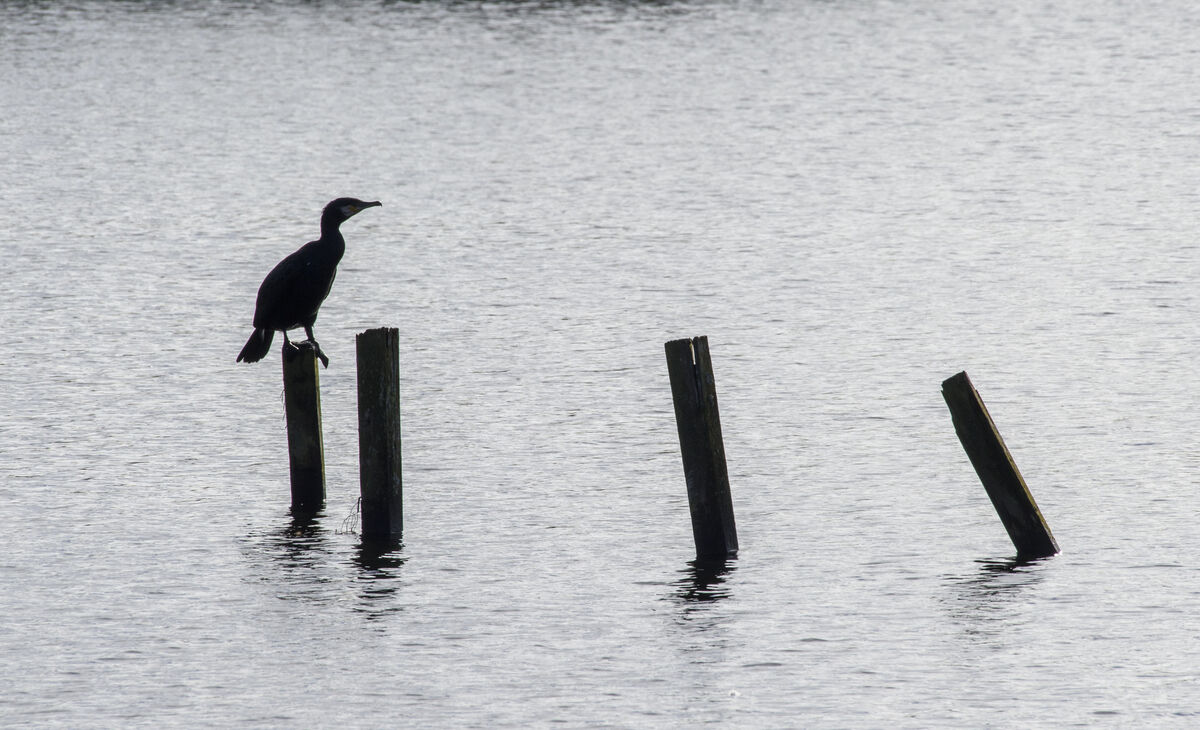Birds of Ireland: Cormorant

A cormorant splashing about near Crosshaven, County Cork. Picture: Denis Minihane.
A cormorant is around 80-95 centimetres long with a wingspan of 125-`145 centimetres. They are a common breeding species found here all year around at sea, on coasts, estuaries and on wetlands.
Cormorants are diving birds which are bigger than a mallard. Both sexes look similar — with a strong, grey, hook-tipped beak, large webbed feet; and a thick snake-like neck. They swim low in water with a slightly raised beak which jumps up and out as they dive.

Adult cormorants are all black; and their breeding plumage features a white ‘diamond’ on the thigh; and an orange/white throat patch.
In their first winter they have a pale belly and throat.

In flight, a cormorant runs along water surface to take off; and they have shallow, rapid wingbeats with intermittent glides. A cormorant flies with its neck slightly bent; low over water or very high on its own or in a group travelling in lines or Vs. They usually ski along water when landing. They are a usually silent bird.
Cormorants and shags are fish-eaters and dive underwater to hunt for food using only their feet to propel them through the water. They sit low in the water and have a snake-like neck and head. The plumage is usually dark and iridescent, especially noticeable during the breeding season.

They also have a habit of holding out their wings when ashore. It is thought that this is because they have poorly developed oil glands and so cannot waterproof their wings as well as other diving birds, such as ducks, and therefore need to dry them out when the feathers become waterlogged. It is also suggested they do this to aid digestion.
Cormorants breed on offshore islands, sea cliffs and even on islands on freshwater lakes. Shags are mainly marine in nature and are rarely seen on freshwater.

- Jim Wilson is a wildlife writer, broadcaster, tour leader, and former chairman of BirdWatch Ireland. He has been involved in the study and conservation of birds in Ireland for more than 45 years, contributing to several major surveys and international projects.
- Mark Carmody is an award-winning wildlife photographer, has a PhD in biochemistry and works as a European patent attorney.







